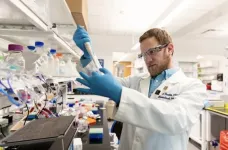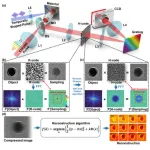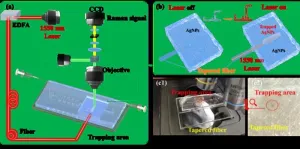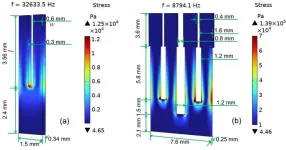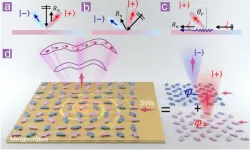Tracing gas adsorption on “crowns” of platinum and gold connected by nanotunnels
Understanding gas diffusion in nanoscale voids key to new gas technologies
2025-02-08
(Press-News.org)
Tokyo, Japan – Researchers from Tokyo Metropolitan University have elucidated how hydrogen and carbon monoxide is adsorbed into solids containing a crown-motif structure of platinum and gold. Using quick-scan X-ray absorption measurements and theoretical calculations, they studied a solid of [PtAu8(PPh3)8]-H[PMo12O40] called PtAu8-PMo12 and found that gas adsorption is affected strongly by the dimension of nanoscale voids in the structure. This highlights the importance of engineering voids in materials for next generation sensors and gas separation.
Ligand-protected metal clusters have been a source of great interest for chemists in the development of cutting-edge materials. Clusters of metal atoms surrounded by chemical groups (ligands) take geometries which are fundamentally different from the metals in bulk, adopting distinctive properties which make them especially useful for catalysts. One promising application is the use of platinum containing clusters in accelerating the production of hydrogen, the “hydrogen evolution reaction (HER).” This has made the study of gas transport in metal cluster containing solids a particularly important topic of research.
A team of researchers led by Professor Seiji Yamazoe of Tokyo Metropolitan University have been studying a particular structure consisting of a platinum atom surrounded by eight gold atoms, a so-called “crown-motif” for how the platinum sits on top of a ring of gold atoms. The crown was protected by phosphine ligands, and the entire structure incorporated into a crystal structure. The objective was to elucidate how such a solid, rich in platinum atoms which can bind gas molecules, can interact with introduced gases.
The team looked at hydrogen and carbon monoxide and the solid PtAu8-PMo12, using quick-scan X-ray absorption measurements at 0.1 second intervals to trace how the microscopic structure of the solid changed as gases were introduced. Both gases were found to successfully bind to the platinum atom, drastically changing the surrounding atomic structure as well as the electronic state of the platinum atom. Hydrogen was found to adsorb significantly faster than carbon monoxide, and in a reversible manner. Through observations and theoretical calculations, it was found that this was largely due to the smaller size of the hydrogen molecules. PtAu8-PMo12 consists of voids connected by ultrathin channels; thanks to the size of the hydrogen molecule, it was able to diffuse faster through these channels. While hydrogen was faster, it was found that carbon monoxide was bound irreversibly to platinum atoms. The interaction was strong enough and the voids narrow enough that this led to a distortion of the surrounding structure, creating a “chalice-motif,” with the platinum sitting deeper inside the original crown.
This investigation was part of a larger initiative to understand and enable structural reprogramming of chemical compounds. Through this work, the team have highlighted the importance of elucidating diffusion in voids as a key part of understanding structural change and gas transport in solids.
This work was supported by a NEDO Project (JPNP14004), JSPS KAKENHI Grant Numbers 22K14543, 24K01259, 24K17562, 24H02210, 24H02211, and 24H02217, a Tokyo Metropolitan Government Advanced Research Grant (R3-1), Tokyo Human Resources Fund for City Diplomacy, and the Tokyo Metropolitan University Research Fund for Young Scientists. Synchrotron radiation experiments were performed in SPring-8 under the approval of the Japan Synchrotron Radiation Research Institute (JASRI) (202407, 2023A1326, 2022B1259, and 2021B1380).
END
[Attachments] See images for this press release:
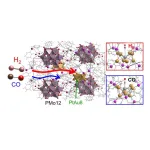
ELSE PRESS RELEASES FROM THIS DATE:
2025-02-08
A new study in Nature describing a fossil of a nearly complete and intact bird skull from Antarctica is shedding light on the early evolution of today’s birds and avian diversity at the end of the Age of Dinosaurs.
The skull is from Vegavis iaai, an extinct duck-like bird that lived during the Late Cretaceous, just before non-avian dinosaurs went extinct. It’s one of very few 3D bird skulls known to science from the Cretaceous — a 79-million-year geological period and the last era when ...
2025-02-08
A UCLA research team has found that drugs being sold as fentanyl contain high amounts of the industrial chemical bis(2,2,6,6-tetramethyl-4-piperidyl) sebacate, or BTMPS. This new substance of concern emerged in the illicit drug supply nearly simultaneously in multiple U.S. locations from coast-to-coast.
From June through October 2024, the team quantitatively tested samples of drugs sold as fentanyl that had high levels of the chemical, which belongs to a class of compounds called hindered amine light stabilizers ...
2025-02-08
As many as 40% of Americans are obese, putting them at an increased risk for high blood pressure, diabetes, stroke, heart disease and certain cancers, according to the CDC. New research from the University of Delaware aims to tackle the issue by investigating obesity at the gene level.
Principal investigator Ibra Fancher, assistant professor of kinesiology and applied physiology in UD’s College of Health Sciences, discovered significant differences in gene expression in adipose tissue, more commonly known as fat. Formerly considered fat storage, adipose tissue is now recognized as a vital ...
2025-02-08
Hoboken, N.J., February 7, 2025 — As winter storms and summer heat waves increasingly stress the nation’s power grids, Stevens researchers have developed a new way to identify the homes most vulnerable to blackouts — without even visiting them.
The timing couldn't be more critical. With more than a quarter of U.S. homes already fully electric, and solar installations set to triple during the next five years, understanding vulnerabilities has become critical for emergency planning and public safety.
"We're ...
2025-02-07
A new publication from Opto-Electronic Advances; DOI 10.29026/oea.2025.240193 , discusses a novel approach towards robust construction of physical colors on lithium niobate crystal.
Color has a profound impact on the way humans observe, perceive and understand the world. It is like a silent language, subtly shaping our perception and response to the surrounding environment. From the first ray of sunshine in the morning to the twinkling stars in the night sky, colors are everywhere. They are not only a visual ...
2025-02-07
A new publication from Opto-Electronic Advances; DOI 10.29026/oea.2025.240180 , discusses high-frequency enhanced ultrafast compressed photography technology.
Single-shot ultrafast imaging technology can characterize transient events under a wide range of conditions. It opens the door to explore the unrepeatable or difficult to reproduce ultrafast phenomena such as photosynthesis at the molecular or atomic scale in nature and the precision manufacturing of semiconductor ...
2025-02-07
A new publication from Opto-Electronic Advances; DOI 10.29026/oea.2025.240182 , discusses a single-beam optical trap-based surface-enhanced Raman scattering optofluidic molecular fingerprint spectroscopy detection system.
Raman spectroscopy is a non-destructive analytical technique that allows for precise analysis of substances based on their unique molecular Raman spectral characteristics. However, traditional Raman spectroscopy techniques suffer from weak signal intensity, limiting their sensitivity in high-sensitivity detection applications. Surface-enhanced Raman scattering (SERS) technology, on the other hand, can amplify Raman signals by several million ...
2025-02-07
Research Highlights:
Stroke survivors were more likely to have little or no disability after 90 days if a clot was removed from a large brain artery followed by the injection of the clot-dissolving medication tenecteplase directly into the artery near the blockage, compared to people receiving standard medical treatment after clot removal. In this trial, standard care was clot removal without clot-dissolving medication.
The added treatment may work by dissolving blood clots in the small vessels (microcirculation) near the major blockage, reducing the amount of brain tissue deprived of blood.
The ANGEL-TNK trial found that this approach was ...
2025-02-07
A new publication from Opto-Electronic Advances; DOI 10.29026/oea.2025.240275, discusses A highly sensitive laser gas sensor based on a four-prong quartz tuning fork.
Trace gases, though have a volume fraction much less than 1% of the atmosphere, significantly impact various sectors. Despite their low concentration, typically between 10-12 to 10-6, gases like nitrogen oxides (NOx), sulfur dioxide (SO2), and greenhouse gases contribute to atmospheric pollution, a pressing global issue exacerbated by industrialization and urbanization. Moreover, detecting trace gases is crucial for industrial ...
2025-02-07
A new publication from Opto-Electronic Sciences; DOI 10.29026/oes.2025.240024, discusses generation of terahertz complex vector light fields on a metasurface driven by surface waves.
With the rapid development of information and communication technologies, especially in the context of 5G, 6G networks, artificial intelligence, and the Internet of Things, the development of on-chip optical control devices with high bandwidth, high speed, low power consumption, and miniaturization ...
LAST 30 PRESS RELEASES:
[Press-News.org] Tracing gas adsorption on “crowns” of platinum and gold connected by nanotunnels
Understanding gas diffusion in nanoscale voids key to new gas technologies


